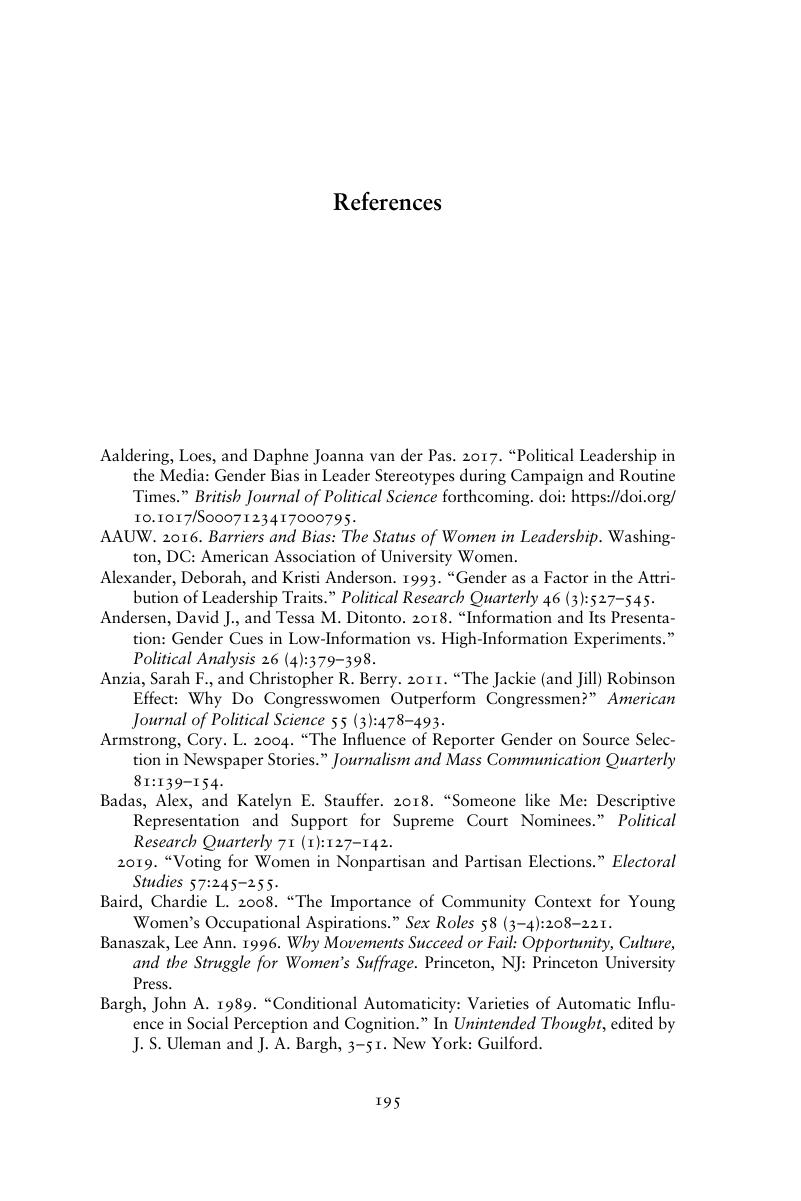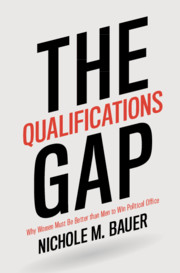Book contents
- The Qualifications Gap
- The Qualifications Gap
- Copyright page
- Dedication
- Contents
- Figures
- Tables
- Acknowledgments
- 1 The Gendered Qualification Gap
- 2 Fomenting a Gender Rebellion
- 3 No Place for Women
- 4 A Gendered Information Gap
- 5 Do Voters Expect Women to Be Better than Men?
- 6 Different Parties, Different Standards
- 7 Gender Bias, Disrupted
- 8 The Future Is Female
- Appendixes
- References
- Index
- References
References
Published online by Cambridge University Press: 17 July 2020
- The Qualifications Gap
- The Qualifications Gap
- Copyright page
- Dedication
- Contents
- Figures
- Tables
- Acknowledgments
- 1 The Gendered Qualification Gap
- 2 Fomenting a Gender Rebellion
- 3 No Place for Women
- 4 A Gendered Information Gap
- 5 Do Voters Expect Women to Be Better than Men?
- 6 Different Parties, Different Standards
- 7 Gender Bias, Disrupted
- 8 The Future Is Female
- Appendixes
- References
- Index
- References
Summary

- Type
- Chapter
- Information
- The Qualifications GapWhy Women Must Be Better than Men to Win Political Office, pp. 195 - 212Publisher: Cambridge University PressPrint publication year: 2020



